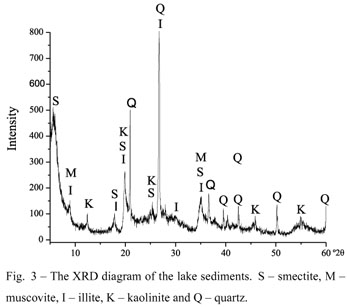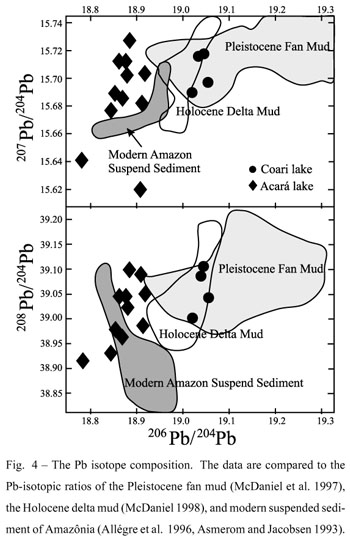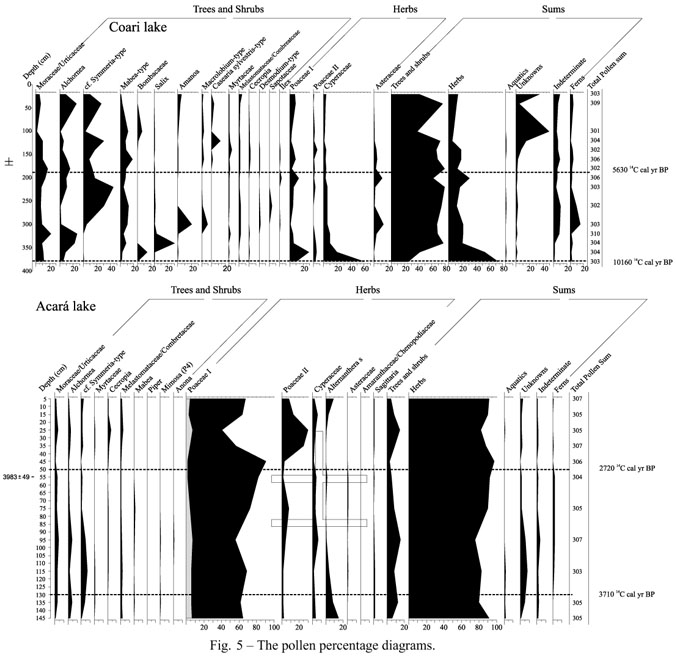The sediments from the Coari lake, a “terra firme” lake sculpted into Plio-Pleistocene deposits, and the Acará lake, a flooding-type lake developed on Quaternary sediments in the floodplain of the mid-Solimões river, in the western Amazônia, Brazil, were studied to investigate the environmental condition of their developing. This study includes mineral composition, geochemistry, Pb isotope, palinology, radiocarbon-age and morphological framework of the lakes obtained from SRTM satellite images. The geological and the environmental conditions in the two lakes are highly variable and suggest that their evolution reflect autogenic processes under humid rainforest condition. Although kaolinite, quartz, muscovite, illite, and smectite are the main minerals in both lakes, the geochemistry indicates distinct source, the Acará lake sediments have higher concentrations of Al2O3, Fe2O3, FeO, CaO, K2O, MgO, Na2O, P2O5, Ba, V, Cu, Ni, Zn, Pb, Sr, Li, Y and La and have more radiogenic Pb than the Coari lake sediments. The radiocarbon ages suggest that at 10160 yr BP the Coari lake started to be developed due to avulsion of the Solimões river, and the Acará lake was formed by the meander abandonment of Solimões river retaining its grass dominated shore at ca. 3710 yr BP.
Pb isotopes; lacustrine environment; paleovegetation; flooding plain; Holocene









